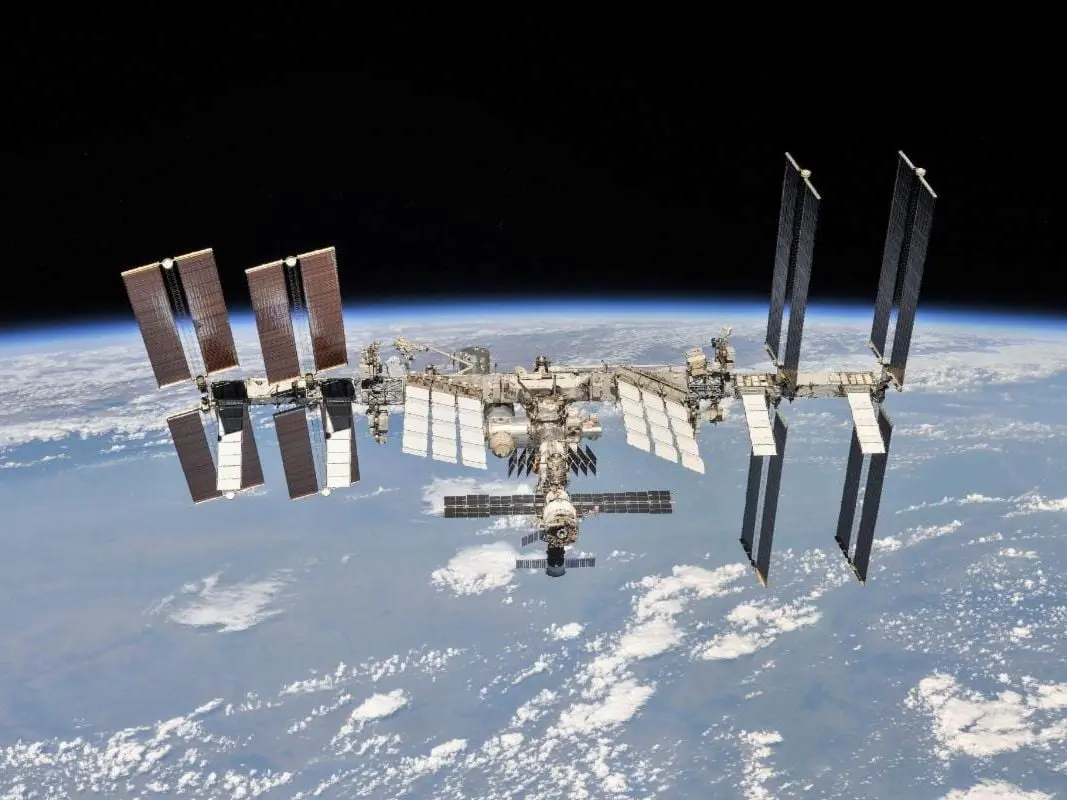| In this week’s newsletter, learn where and when to watch the launch of Axiom Mission 4, the fourth private astronaut mission to the International Space Station; hear John Mather, a Nobel Prize winner in physics, talk about his role in the development of the James Webb Space Telescope; and find out what happens when the universe’s most magnetic object shines with the power of 1,000 suns in a matter of seconds. Plus, more stories you might have missed. |
| HUMANS IN SPACE The Launch of Axiom Mission 4  |
| From left to right: Axiom Mission 4 Specialist Tibor Kapu, Pilot Shubhanshu Shukla, Commander Peggy Whitson, and Mission Specialist Sławosz Uznański-Wiśniewski during SpaceX training in Hawthorne, CA. Credits: Axiom Space |
| NASA, Axiom Space, and SpaceX are targeting 8:22 a.m. EDT, Tuesday, June 10, for the launch of Axiom Mission 4, the fourth private astronaut mission to the International Space Station. Peggy Whitson, former NASA astronaut and director of human spaceflight at Axiom Space, will command the commercial mission, while Indian Space Research Organisation astronaut Shubhanshu Shukla will serve as pilot. The two mission specialists are European Space Agency project astronaut Sławosz Uznański-Wiśniewski of Poland and Tibor Kapu of Hungary. Live launch coverage begins at 7:25 a.m. EDT on NASA+. MISSION COVERAGE |
 | HUMANS IN SPACE Space Station Research NASA and the Indian Space Research Organisation are collaborating to launch scientific investigations aboard Axiom Mission 4, the fourth private astronaut mission to the International Space Station. These studies include examining muscle regeneration, growth of sprouts and edible microalgae, survival of tiny aquatic organisms, and human interaction with electronic displays in microgravity. SCIENCE LAUNCHING |
| PODCASTS Peering into Our Universe The James Webb Space Telescope is doing something astronomers dreamed about for decades: peering into our universe’s early past, a period known as cosmic dawn. In the latest episode of NASA’s Curious Universe, John Mather, a Nobel Prize winner in physics, talks about his role in the telescope’s development. LISTEN |  |
 THE UNIVERSE THE UNIVERSEColliding Galaxy Clusters New observations from NASA’s Chandra X-ray Observatory and other telescopes have captured a rare cosmic event: two galaxy clusters have collided and are now poised to head back for another swipe at each other. LEARN MORE |  THE UNIVERSE THE UNIVERSESnacking on Stars A new study using space- and ground-based data from NASA, the European Space Agency, and other institutions describes three extreme examples of supermassive black holes feasting on massive stars. These events released more energy than 100 supernovae and represent the most energetic type of cosmic explosion since the big bang discovered so far. LEARN MORE |
| More NASA News |
 | In June, skywatchers can observe Saturn and Venus in the eastern sky; the bright central core of the Milky Way galaxy; and, for those north of the equator, the summer solstice. |
 | A smashup between our Milky Way and the Andromeda galaxy would trigger a firestorm of star birth, supernovae, and maybe toss our Sun into a different orbit. Simulations had suggested this collision was inevitable, but now a new study using data from the Hubble Space Telescope and the European Space Agency’s Gaia space telescope says, “Not so fast.” |
 | After capturing an image of the iconic Sombrero galaxy at mid-infrared wavelengths in late 2024, the James Webb Space Telescope has now followed up with an observation in the near-infrared. Studying galaxies at different wavelengths, including the near-infrared and mid-infrared, helps astronomers understand how complex systems of stars, dust, and gas formed and evolved. |
 | What happens when the universe’s most magnetic object shines with the power of 1,000 suns in a matter of seconds? Thanks to the Imaging X-ray Polarimetry Explorer, a collaborative mission with the Italian Space Agency, scientists are one step closer to understanding this extreme event. |
 | A lot can change in a year for Earth’s forests and vegetation, as springtime and rainy seasons can bring new growth, while cooling temperatures and dry weather can bring a dieback of those green colors. Now, for the first time, Plankton, Aerosol, Cloud, ocean Ecosystem (PACE) satellite measurements have allowed scientists to show a complete year of global vegetation data using three pigments: chlorophyll, anthocyanins, and carotenoids. |
| Do You Know? |
 |
| Today we’re celebrating the birthday of the first person to drive a lunar rover on the Moon! |
| Who is the birthday boy? A. David R. Scott B. Harrison H. Schmitt C. Charles M. Duke D. Buzz Aldrin |
| Find out the answer in next week’s edition of the NASA newsletter! |
 | Last week, we asked what NASA astronaut Ed White said during his Gemini IV spacewalk 60 years ago. Not long after he left the spacecraft, he marveled at the experience, saying, “I feel like a million dollars.” Later, when White ended the extravehicular activity and returned to the Gemini IV spacecraft, he commented, “This is the saddest moment of my life.” |
 |
| Do you have a telescope? Would you like to see some of the same night sky objects from the ground that Hubble has seen from space? We invite you to commemorate the Hubble Space Telescope’s 35th anniversary by accepting our yearlong stargazing challenge! New challenge objects will be featured weekly. This week’s object is Messier 101 (M101), also called the Pinwheel galaxy. This giant spiral disk of stars, dust, and gas is 170,000 light-years across — nearly twice the diameter of our Milky Way galaxy. Pierre Méchain, one of Charles Messier’s colleagues, discovered the Pinwheel galaxy in 1781. Located 25 million light-years away from Earth in the constellation Ursa Major, M101 can be spotted through a small telescope. JOIN THE CELEBRATION |
NOTE: This is a NASA publication. Used with permissions & formatted to fit this screen.
